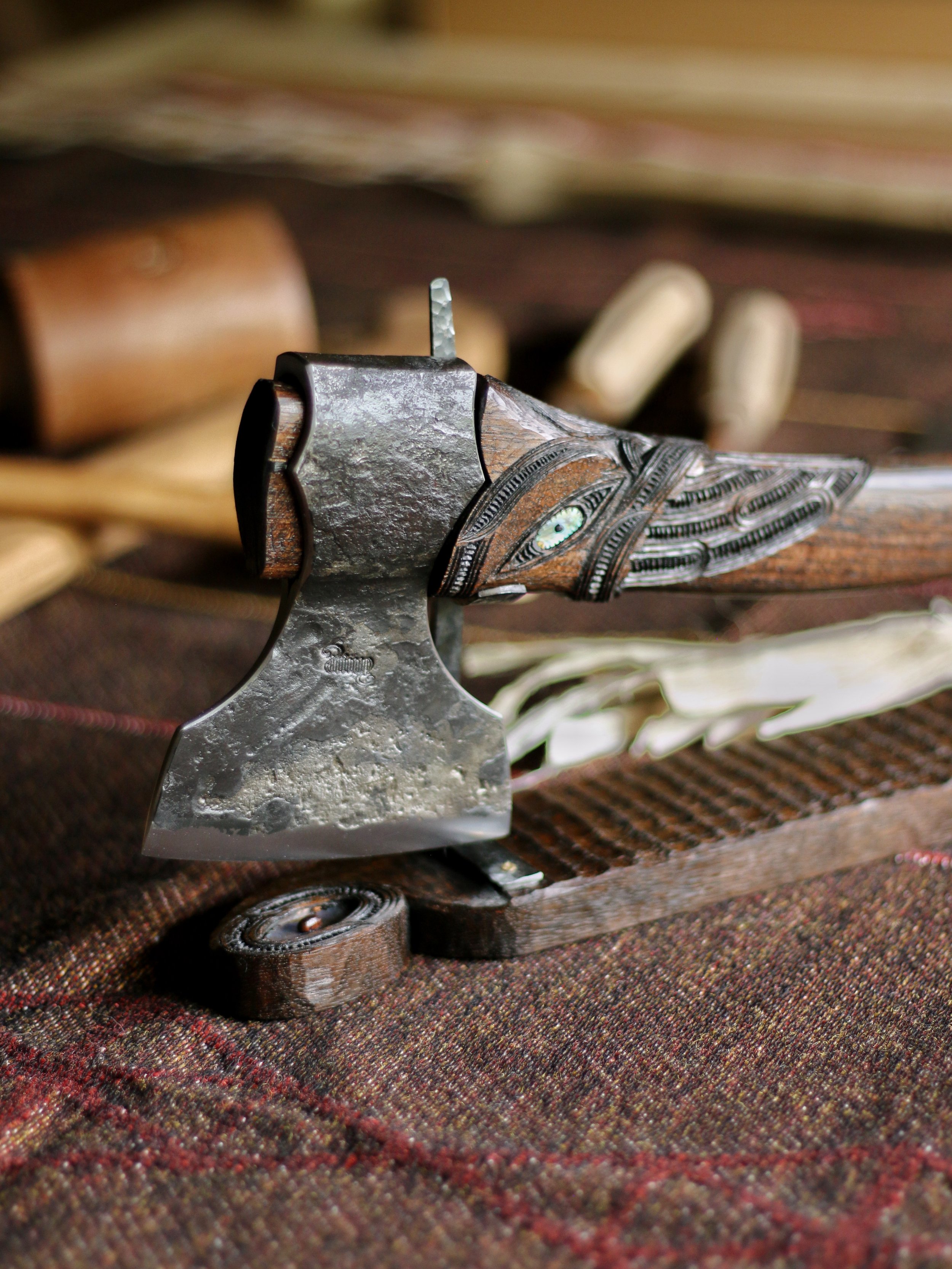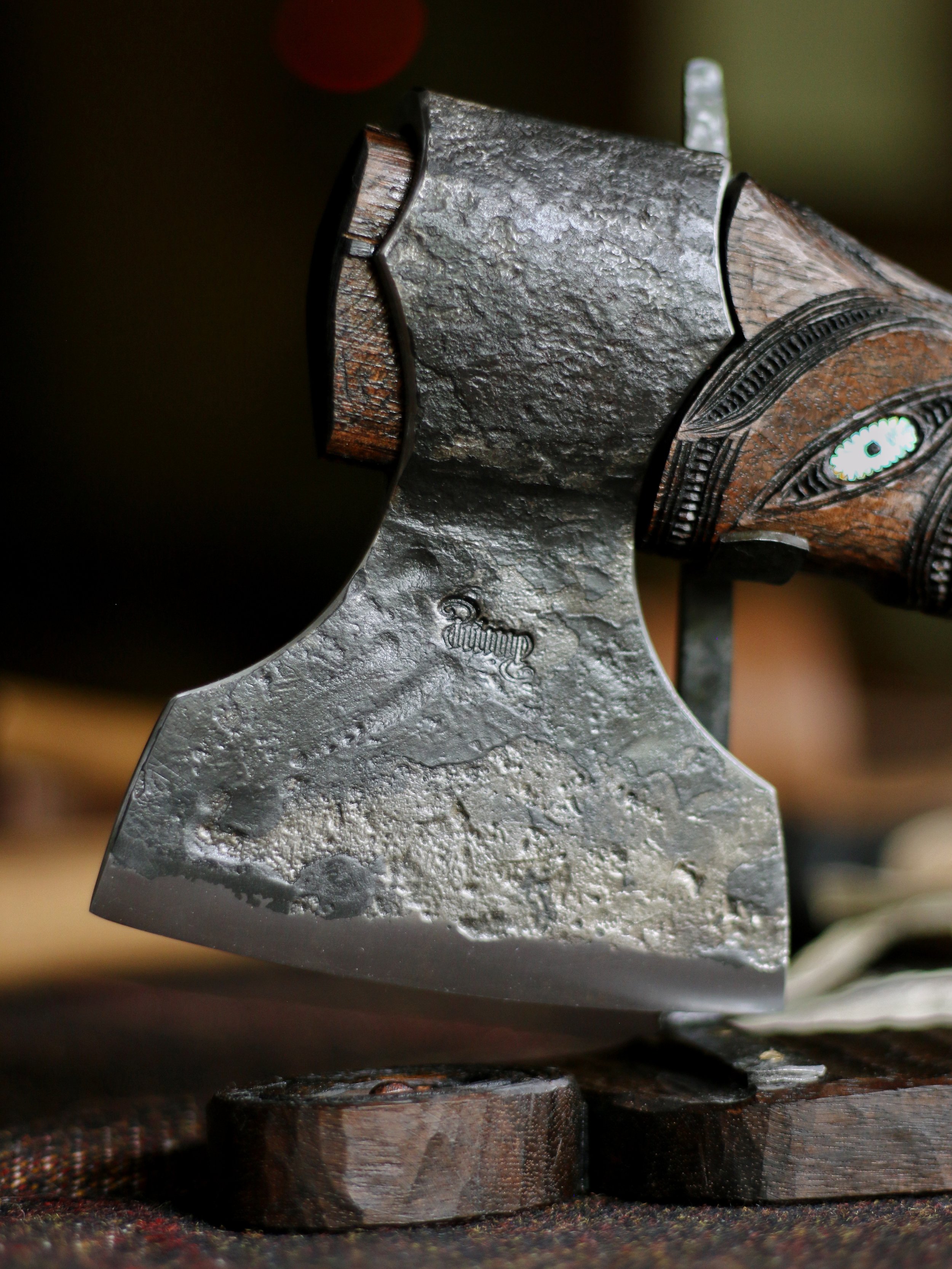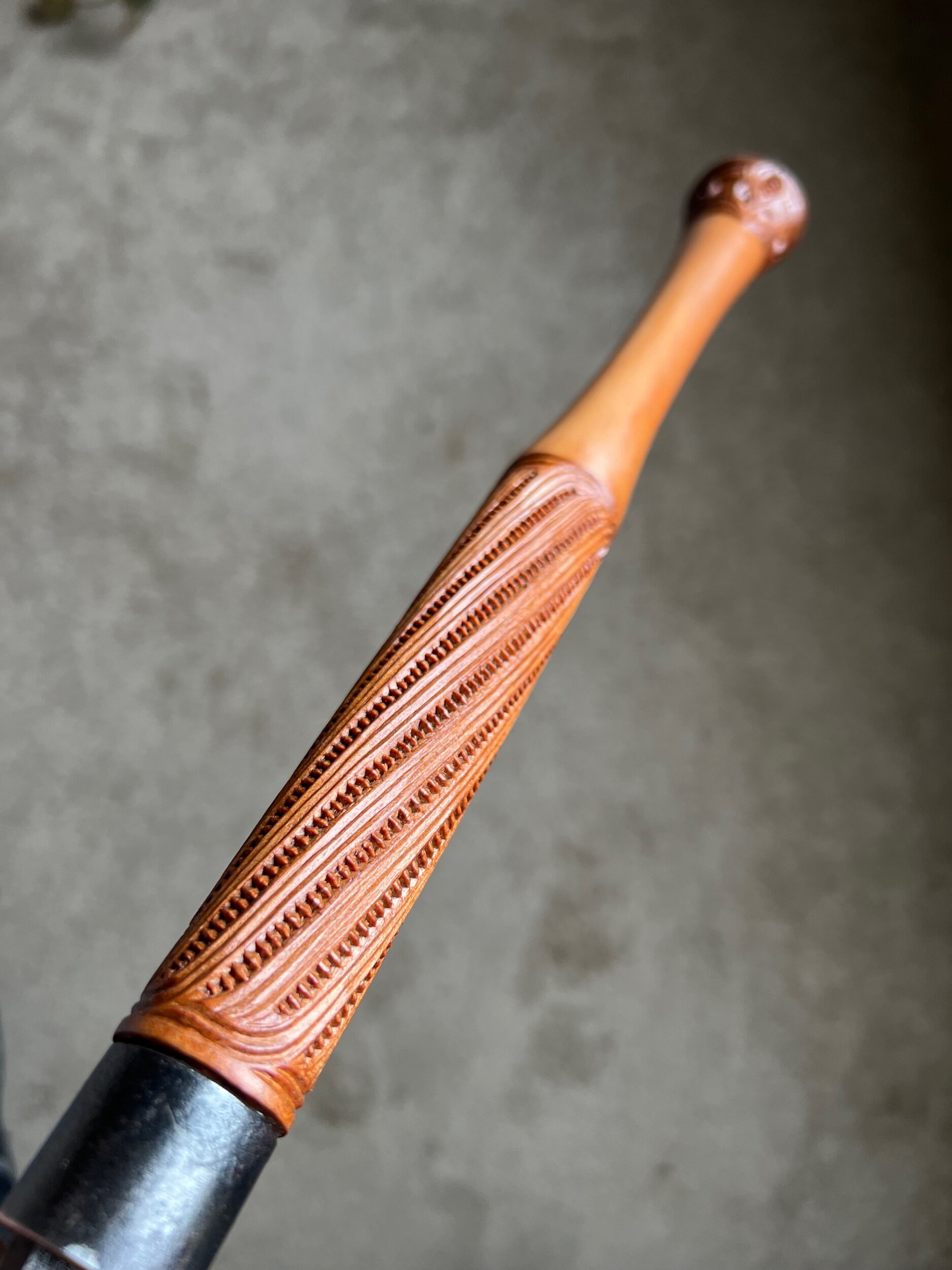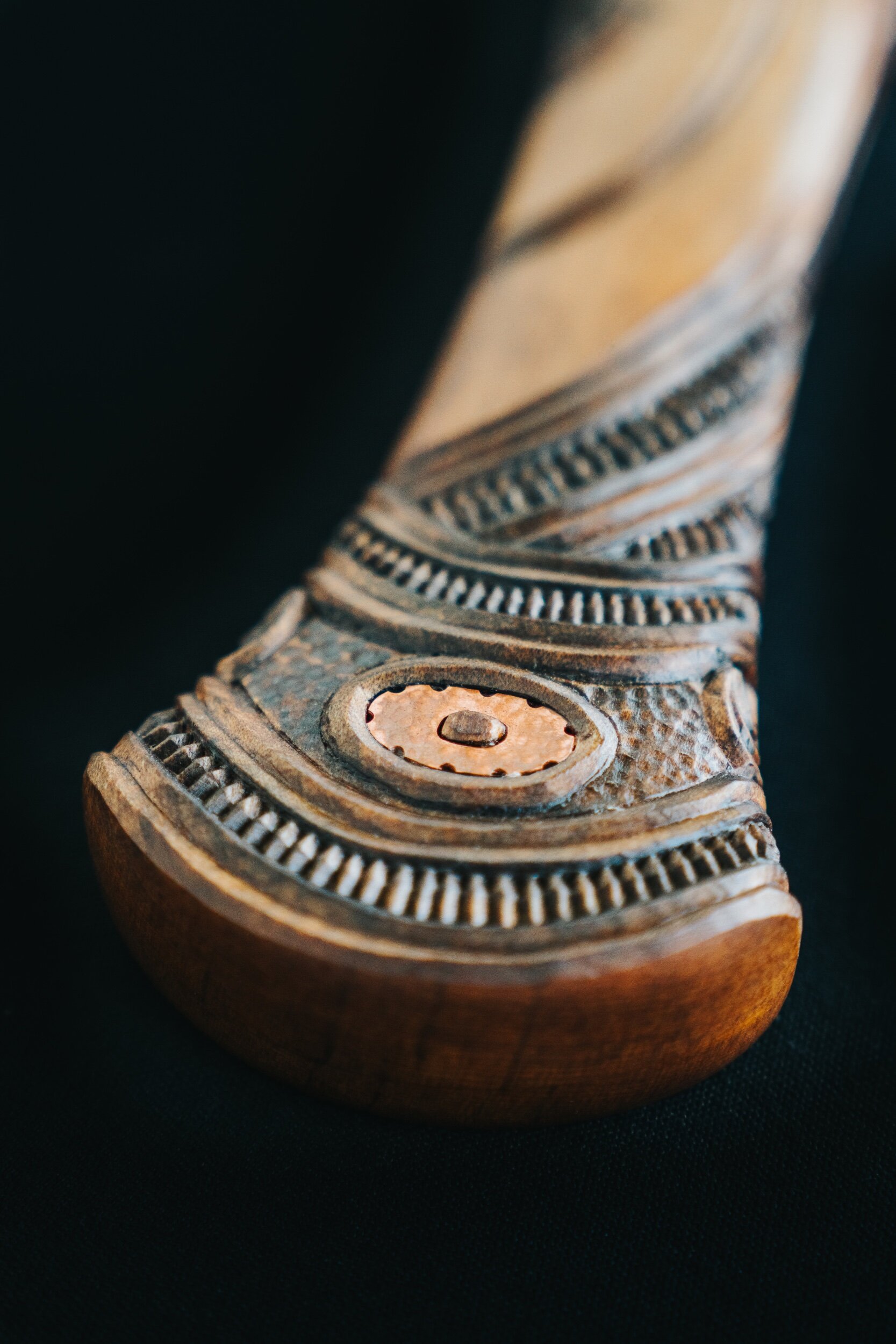 Image 1 of 7
Image 1 of 7

 Image 2 of 7
Image 2 of 7

 Image 3 of 7
Image 3 of 7

 Image 4 of 7
Image 4 of 7

 Image 5 of 7
Image 5 of 7

 Image 6 of 7
Image 6 of 7

 Image 7 of 7
Image 7 of 7








Pātītī - War Axe
A true one of a kind piece, this Pātītī (carved Māori war axe) is 100% made here in Te Tai Tokerau, including the axe head.
Artisan maker A.J. Prime has expertly hand-forged the axe head with a wrap and weld method typical of early axe heads. He has then hung the head on a hand carved kakau (handle) with an ūpoko (head) directly beneath the axe head. The tongue of the ūpoko is artistically portrayed using pākati and haehae. A manaia head at the end rounds out the carving of the kakau. Pāua inlays bring the eyes to life.
A taura (rope) woven from aute (paper mulberry) bark cloth fibers is thread through the square hole in the kakau.
The pātītī sits atop a bespoke display stand, exquisitely carved in matching wood and features forged steel uprights and brass pins.
Axe head: Mild steel body with 1045 carbon steel edge bit, traditional wrap and weld construction.
Kakau: Ebonised eucalyptus saligna; aute and wax cord taura.
Stand: Ebonised eucalyptus saligna; pāua eyes; forged steel uprights; brass pins.
Historical note: Traditionally pātītī were made with hatchet heads traded to Māori by missionaries and early colonialist, in exchange for supplies and in in some cases for the use of land. Our tūpuna recognised the value of steel and quickly adapted the hatchets to weapons of war, with elaborately carved handles (kakau)
A true one of a kind piece, this Pātītī (carved Māori war axe) is 100% made here in Te Tai Tokerau, including the axe head.
Artisan maker A.J. Prime has expertly hand-forged the axe head with a wrap and weld method typical of early axe heads. He has then hung the head on a hand carved kakau (handle) with an ūpoko (head) directly beneath the axe head. The tongue of the ūpoko is artistically portrayed using pākati and haehae. A manaia head at the end rounds out the carving of the kakau. Pāua inlays bring the eyes to life.
A taura (rope) woven from aute (paper mulberry) bark cloth fibers is thread through the square hole in the kakau.
The pātītī sits atop a bespoke display stand, exquisitely carved in matching wood and features forged steel uprights and brass pins.
Axe head: Mild steel body with 1045 carbon steel edge bit, traditional wrap and weld construction.
Kakau: Ebonised eucalyptus saligna; aute and wax cord taura.
Stand: Ebonised eucalyptus saligna; pāua eyes; forged steel uprights; brass pins.
Historical note: Traditionally pātītī were made with hatchet heads traded to Māori by missionaries and early colonialist, in exchange for supplies and in in some cases for the use of land. Our tūpuna recognised the value of steel and quickly adapted the hatchets to weapons of war, with elaborately carved handles (kakau)




































